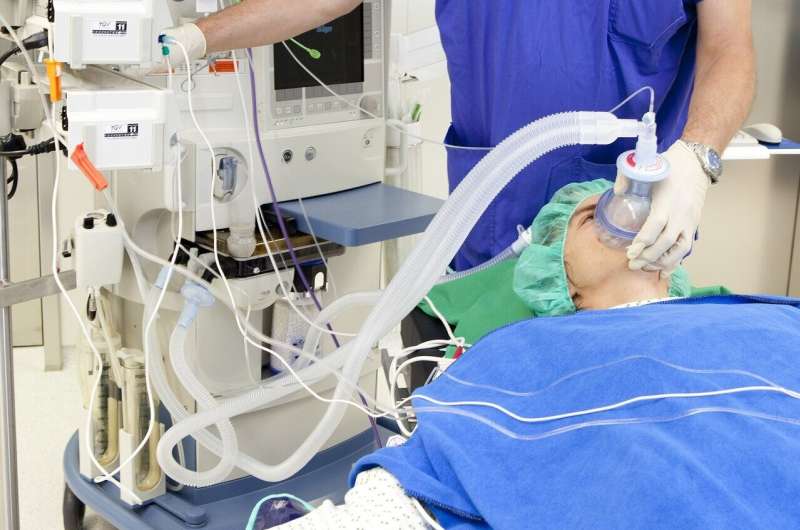This article has been reviewed according to Science X's editorial process and policies. Editors have highlighted the following attributes while ensuring the content's credibility:
fact-checked
proofread
Measurement tool can help reduce over-inflation of safety device on breathing tubes used during general anesthesia

A measurement tool should be used to reduce overinflation of a device, located on breathing tubes, that protects the patient's airway during general anesthesia to help prevent complications such as sore throat, according to results of a quality improvement initiative presented at the virtual American Society of Anesthesiologists' Anesthesia Quality and Patient Safety Meeting.
To prepare a patient for general anesthesia, the anesthesiologist places a breathing tube in the trachea (windpipe). Most breathing tubes have a tracheal cuff, which is a balloon that surrounds part of the tube and is inflated to seal and protect the airway during the procedure and to maintain the airflow for ventilation.
Quantitative measurement of cuff pressures is not standard at most institutions in the United States. Instead, anesthesiologists often press the cuff between their fingers to check the inflation. This leads to overinflation of the cuff more than half of the time, which increases the risk of a sore throat, cough or injury to the patient's airway. To help reduce overinflation and prevent complications, the researchers implemented a quality initiative using a quantitative pressure-measuring device called a manometer.
"Similar to checking the pressure of a car's tires before a road trip, tracheal cuff pressures should be accurately checked using a manometer for each patient having a surgical procedure under general anesthesia," said Mark Zimmer, B.S., a medical student at UT Southwestern Medical Center, Dallas. "Educating anesthesiologists on how to use the manometer will help to improve technique and the practice of breathing tube placement and tracheal cuff inflation, which has the potential to positively impact outcomes and reduce complications for patients."
Before the quality initiative was implemented, researchers collected data from 75 consecutive patients and determined cuff overinflation occurred 59% of the time and 60% of patients had a sore throat after the procedure. For the intervention, manometers were placed in all operating rooms, anesthesiologists were educated on using the device and a new section was added to the electronic medical record to allow anesthesiologists to document the measured pressure.
After the quality initiative was implemented, the researchers collected inflation and complication data over 10 weeks from 200 patients, and found an 82% compliance with the initiative. Additionally, they determined that overinflation occurred 27% of the time (a 54% decrease) and 32% of patients had a sore throat (a 47% decrease).
"Hospitals need to invest in the purchase of manometers for tracheal cuff pressure measurement and anesthesia departments should educate providers regarding the correct way to assess cuff pressures," said Eric Rosero, M.D., MSc, senior investigator of the study and associate professor in anesthesiology and pain management at UT Southwestern Medical Center.




















